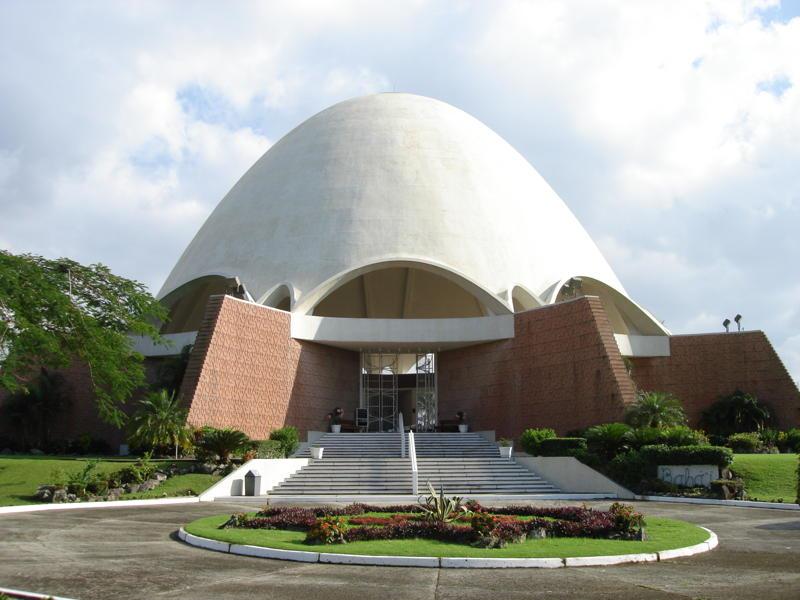Amid smoky and beat-up buses, street vendors and hillsides crammed with rickety shacks, the only temple of the Baha’i faith in Latin America rises like a stalagmite on the summit of a leafy green hill.
“People who come to visit us can’t believe that this place exists in such a difficult and chaotic environment,” Abdiel Gonzalez, the director of the worship center for the religion founded in Iran in the 19th century, told EFE.
The temple, located in San Isidro, one of Panama City’s most depressed and violent districts, was inaugurated in 1972 and over the years it has become one of the capital’s most highly recommended tourist destinations.
About 2,000 tourists visit the temple each month, most of them Europeans, Americans and Canadians, attracted by its spectacular views, possibly the best in the city, and its quiet and peaceful gardens.
This year, the number of visits has risen by 13 percent over 2015, something that Gonzalez attributes to the promotion of the temple on the social networks and, primarily, the metro line established in this neighborhood along one of the city’s most heavily-traveled access routes, the Transistmica.
“Before the metro was built, nobody knew how to get here. They got lost and never managed to find us. Now, we’ve become much more visible because one of the metro exits is right at the Baha’i Temple,” Gonzalez said.
When you get to the top of the hill, you come to a stone-paved road, with flowers and butterflies along it, which leads to an imposing white half-moon-shaped building, the work of English architect Peter Tillotson. A diaphanous edifice, without doors or windows, adorned exclusively with rows of wooden benches.
To the south is the spectacular modern capital skyline, but to the north the view reflects the country’s pervasive inequality, with a huge shantytown stretching into the distance and the noise from the heavily populated zone spreading up toward you like a pervasive rustling.
“The purpose of the house of worship is for people to have a spiritual place to pray and meditate, independent of the religion they profess. In fact, 90 percent of our visitors are not believers,” says the temple director.
The Baha’i faith, with its 7 million faithful, is considered the second-most-widely-professed independent religion in the world. Founded in 1844, the phrase that sums up the central doctrine of the faith – followed nowadays mainly in Iran and Yemen, but accepted around the world – is that “the Earth is a single country and (members of) humanity are its inhabitants,” Gonzalez said.
“Our faith is based on equality of the sexes, of religions and races. It was a revolutionary and modern idea for the epoch in which it was born,” he added.
The Panama temple, funded by donations that are not made public, is one of just seven worldwide and was erected due to a 1908 prophecy that – after work was begun on the Panama Canal – said that the country would attain key importance for the Americas.
